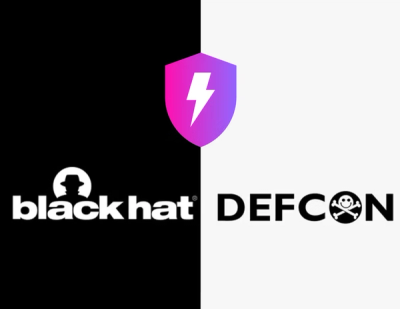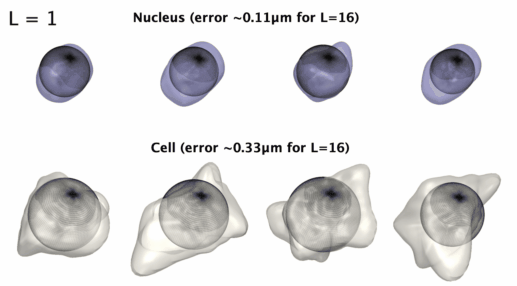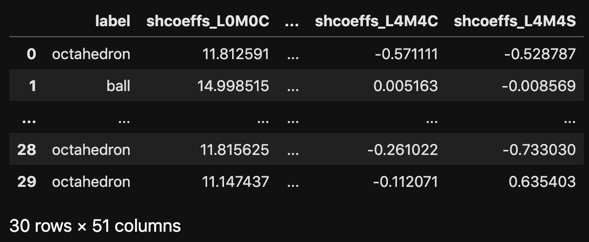
Security News
Meet Socket at Black Hat and DEF CON 2025 in Las Vegas
Meet Socket at Black Hat & DEF CON 2025 for 1:1s, insider security talks at Allegiant Stadium, and a private dinner with top minds in software supply chain security.

If you are using Python 3.13.*, you will need to install the following build dependencies:
One convenient way to install these dependencies is by using Conda. You can run the following command:
conda install -c conda-forge fftw openblas cmake pkg-config
Stable Release: pip install aicsshparam
Build from source to make customization:
git clone git@github.com:AllenCell/aics-shparam.git
cd aics-shparam
pip install -e .
Here we outline an example of how one could use spherical harmonics coefficients as shape descriptors on a synthetic dataset composed by 3 different shapes: spheres, cubes and octahedrons.
# Import required packages
import numpy as np
import pandas as pd
import matplotlib.pyplot as plt
from sklearn.decomposition import PCA
from aicsshparam import shtools, shparam
from skimage.morphology import ball, cube, octahedron
np.random.seed(42) # for reproducibility
# Function that returns binary images containing one of the three
# shapes: cubes, spheres octahedrons of random sizes.
def get_random_3d_shape():
idx = np.random.choice([0, 1, 2], 1)[0]
element = [ball, cube, octahedron][idx]
label = ['ball', 'cube', 'octahedron'][idx]
img = element(10 + int(10 * np.random.rand()))
img = np.pad(img, ((1, 1), (1, 1), (1, 1)))
img = img.reshape(1, *img.shape)
# Rotate shapes to increase dataset variability.
img = shtools.rotate_image_2d(
image=img,
angle=360 * np.random.rand()
).squeeze()
return label, img
# Compute spherical harmonics coefficients of shape and store them
# in a pandas dataframe.
df_coeffs = []
for i in range(30):
# Get a random shape
label, img = get_random_3d_shape()
# Parameterize with L=4, which corresponds to50 coefficients
# in total
(coeffs, _), _ = shparam.get_shcoeffs(image=img, lmax=4)
coeffs.update({'label': label})
df_coeffs.append(coeffs)
df_coeffs = pd.DataFrame(df_coeffs)
# Vizualize the resulting dataframe
with pd.option_context('display.max_rows', 5, 'display.max_columns', 5):
display(df_coeffs)

# Let's use PCA to reduce the dimensionality of the coefficients
# dataframe from 51 down to 2.
pca = PCA(n_components=2)
trans = pca.fit_transform(df_coeffs.drop(columns=['label']))
df_trans = pd.DataFrame(trans)
df_trans.columns = ['PC1', 'PC2']
df_trans['label'] = df_coeffs.label
# Vizualize the resulting dataframe
with pd.option_context('display.max_rows', 5, 'display.max_columns', 5):
display(df_trans)

# Scatter plot to show how similar shapes are grouped together.
fig, ax = plt.subplots(1,1, figsize=(3,3))
for label, df_label in df_trans.groupby('label'):
ax.scatter(df_label.PC1, df_label.PC2, label=label, s=50)
plt.legend(loc='upper left', bbox_to_anchor=(1.05, 1))
plt.xlabel('PC1')
plt.ylabel('PC2')
plt.show()

For an example of how this package was used to analyse a dataset of over 200k single-cell images at the Allen Institute for Cell Science, please check out our paper in bioaRxiv.
See CONTRIBUTING.md for information related to developing the code.
If you have any questions, feel free to leave a comment in our Allen Cell forum: https://forum.allencell.org/.
Free software: Allen Institute Software License
FAQs
Spherical harmonics parametrization for 3D starlike shapes
We found that aicsshparam demonstrated a healthy version release cadence and project activity because the last version was released less than a year ago. It has 1 open source maintainer collaborating on the project.
Did you know?

Socket for GitHub automatically highlights issues in each pull request and monitors the health of all your open source dependencies. Discover the contents of your packages and block harmful activity before you install or update your dependencies.

Security News
Meet Socket at Black Hat & DEF CON 2025 for 1:1s, insider security talks at Allegiant Stadium, and a private dinner with top minds in software supply chain security.

Security News
CAI is a new open source AI framework that automates penetration testing tasks like scanning and exploitation up to 3,600× faster than humans.

Security News
Deno 2.4 brings back bundling, improves dependency updates and telemetry, and makes the runtime more practical for real-world JavaScript projects.